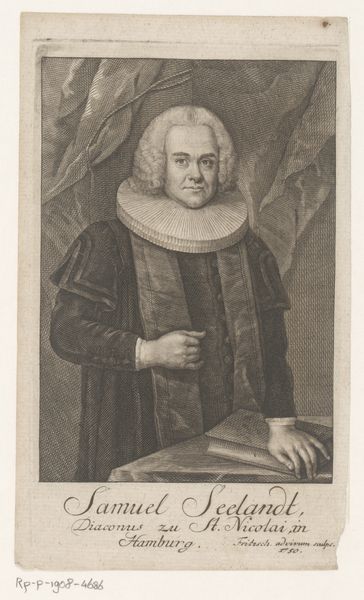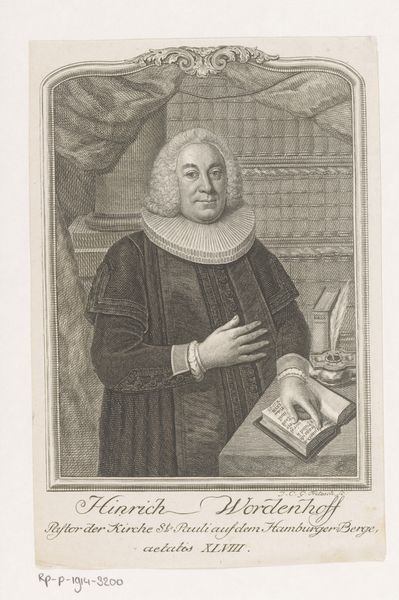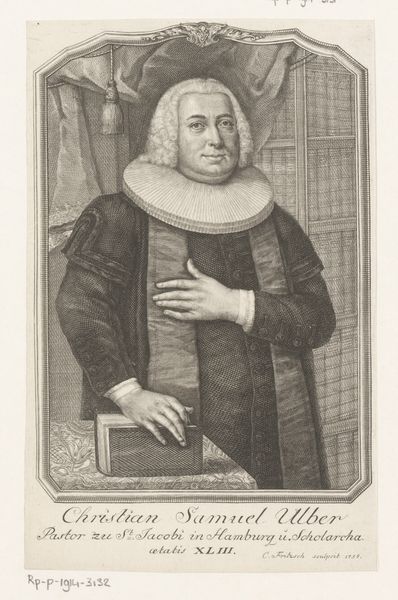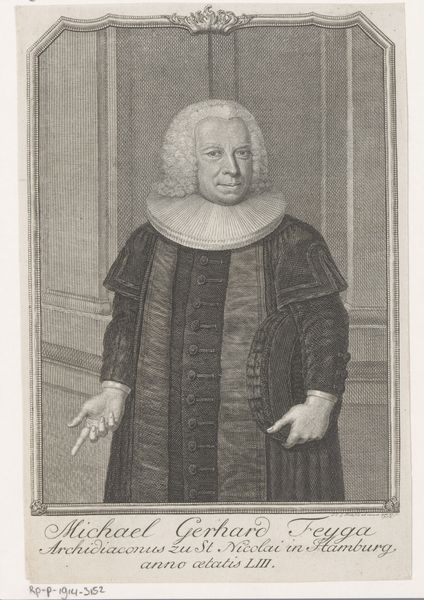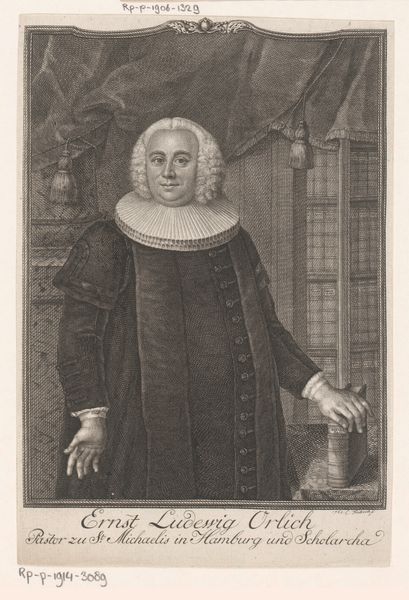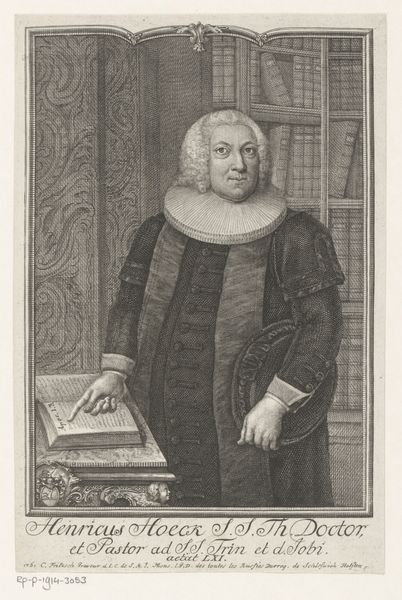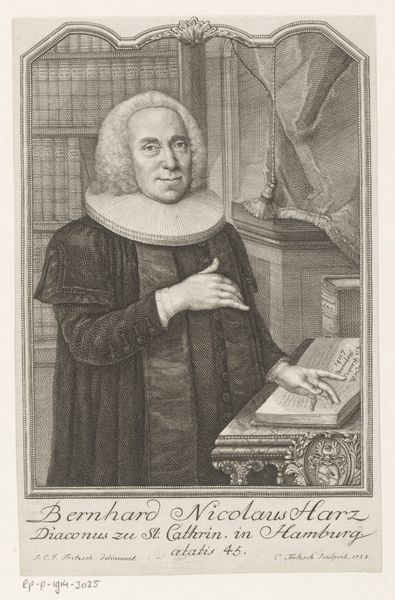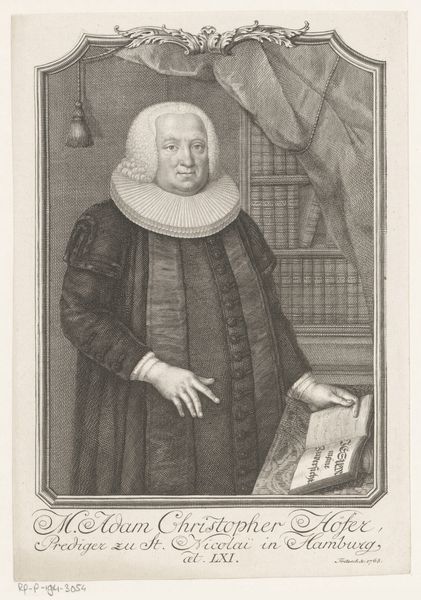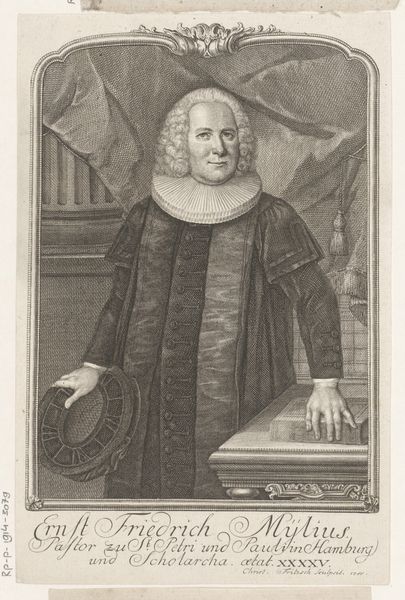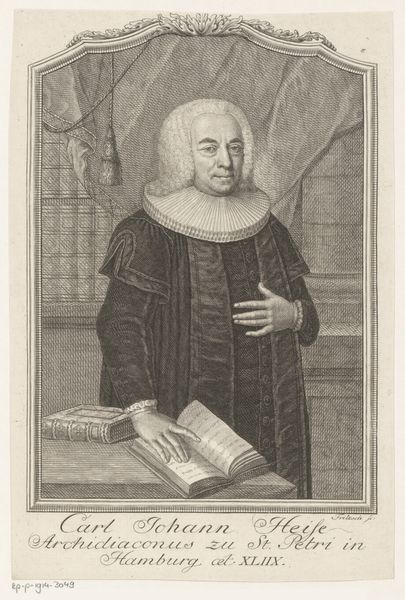
Dimensions: height 186 mm, width 117 mm
Copyright: Rijks Museum: Open Domain
Editor: Here we have Johann Christian Gottfried Fritzsch’s "Portret van Samuel Seelandt," an engraving dating possibly from 1757 to 1802. I’m immediately struck by how the crisp lines of the engraving lend a formality, almost a stoicism, to the subject. What stands out to you? Curator: For me, this portrait invites a deeper exploration into the socio-political forces at play in 18th-century Hamburg. Fritzsch portrays Samuel Seelandt, a deacon, during a time of significant social stratification and the rise of the bourgeoisie. The formal style, as you noted, was not merely aesthetic, but a calculated visual language used by the burgeoning middle class to project authority and respectability. Does the portrait achieve this? Editor: I think so, yes. The ruffled collar and the book signal learning and piety, hallmarks of respected figures. But how does this fit into the larger artistic landscape of portraiture at the time? Curator: Portraiture in this era served a vital public function, shaping collective memory and reinforcing social hierarchies. The very act of commissioning a portrait was a statement. While aristocratic portraits often emphasized grandeur and lineage, portraits of figures like Seelandt highlight civic virtue and professional standing. The museum's decision to display this also frames his image as worth remembrance and emulation, decades after his death. What do you make of the text inscription below the portrait? Editor: It highlights his position at St. Nicolai in Hamburg and gives birth and death dates, providing historical context. So, the museum emphasizes both the art object and his biography? Curator: Precisely! It emphasizes Seelandt’s role within the community, cementing his historical place and subtly promoting the values he represented. We, as viewers today, engage with not only the aesthetic representation but also the curated narrative constructed by both the artist and the institution displaying it. Editor: That's fascinating. I hadn’t considered how much the context of display influences how we see the portrait itself. It's not just about Seelandt; it's about what we're meant to take away from his image and position.
Comments
No comments
Be the first to comment and join the conversation on the ultimate creative platform.
